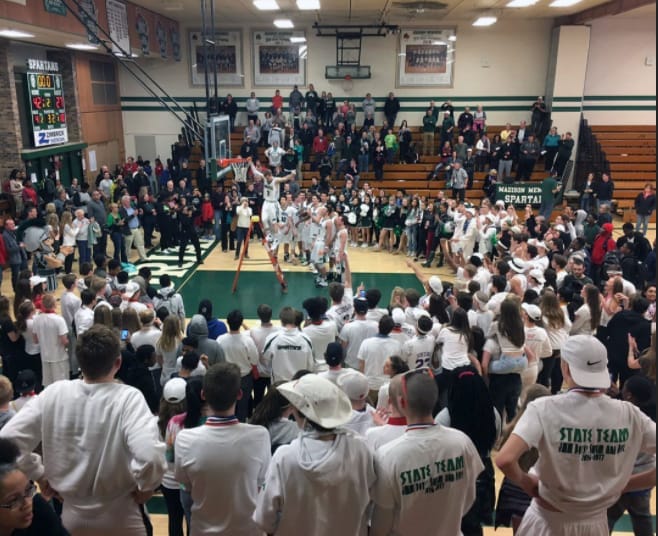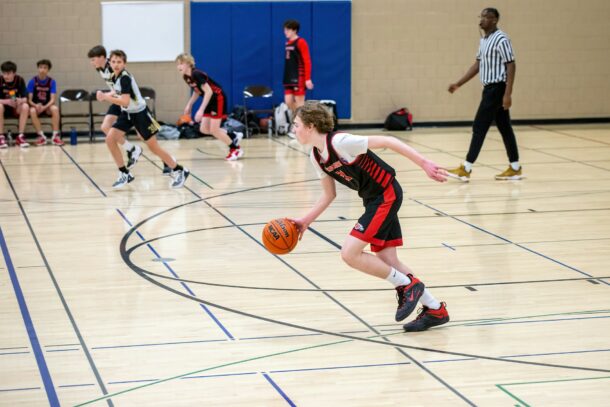If you’re looking to make your practices more efficient, engaging, and effective, small-sided basketball games for youth coaches are one of the best tools you can add to your playbook. Whether you’re working with beginners or experienced players, this approach keeps kids moving, learning, and competing, all while developing the skills they’ll need at higher levels.
Why Small-Sided Games Work So Well
In real basketball, the game often breaks down into smaller situations. Think 3-on-3 on one side of the floor or a 2-on-2 action out of a pick-and-roll. By focusing on these formats in practice, you:
- Give players more touches on the ball.
- Improve spacing and decision-making.
- Create realistic, game-like situations without overcrowding the court.
The beauty of small-sided games is that you don’t have to constantly teach new drills. Instead, you can use the same game format and change the constraints to target specific skills.
Adding Constraints for Skill Development
Once you have your base game, say, 3-on-3 half court, you can modify it with a variety of rules to work on different fundamentals:
- Limit dribbles: no dribble, one dribble, or two dribbles max.
- Shot location: only in the paint, only three-pointers, or must have a post-up before a shot.
- Passing rules: must screen away after a pass or set an on-ball screen.
- Defensive objectives: double-team in specific areas or force baseline drives.
These constraints not only keep the drill fresh but also push players to think, adapt, and execute under different conditions.
Join the TeachHoops Community

TeachHoops.com offers a unique platform for coaches to share experiences and gain new insights. Learn from others who have navigated similar challenges. It’s an invaluable resource for those looking to:
- Broaden perspectives
- Refine strategies
- Enhance their leadership and motivational skills
Step into Enhanced Coaching
Win the Season: Basketball Masterclass!

The “Magic Window” of 2-on-2 and 3-on-3
While 5-on-5 scrimmages are valuable, most game action happens in smaller combinations. That’s why many experienced coaches lean heavily on 2-on-2 and 3-on-3 work. These setups:
- Encourage players to read and react without getting lost in the crowd.
- Allow more opportunities for each player to touch the ball.
- Simplify spacing, making it easier for young players to learn movement principles.
If you want players to succeed in full 5-on-5, they need to first master these smaller formats.
Keeping It Competitive
Competition is the fuel that keeps players engaged. When running small-sided games:
- Keep score to create urgency.
- Add time limits for quick decision-making.
- Reward execution, not just scoring. For example, give points for good screens or defensive stops.
When kids feel like they’re “scrimmaging” while actually working on targeted skills, practice becomes both productive and fun.
Final Thoughts
Small-sided basketball games for youth coaches aren’t just a trend, they’re a proven way to build fundamentals, maximize limited practice time, and keep players motivated. By starting with a simple format like 3-on-3 and layering in creative constraints, you can address multiple skills in a single session.
For ready-made practice plans that use these methods and build skills progressively throughout the season, visit CoachingYouthHoops.com. You’ll save time, keep practices focused, and help your players grow one small-sided game at a time.
Latest Posts
- Youth Sports Coaching Tools: How Can Sideline Savings Streamline Your Experience?
- The Ultimate 20-Minute Basketball Workout for Players Training Alone
- Full Court Press Defense Drills Every Youth Coach Should Teach
- A Simple Dribble Handoff Drill Every Youth Coach Should Teach
- Building a Smarter Youth Basketball Offense: Coaching Tips





